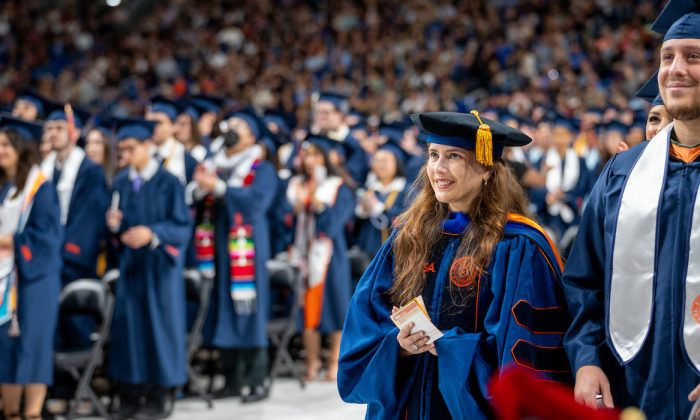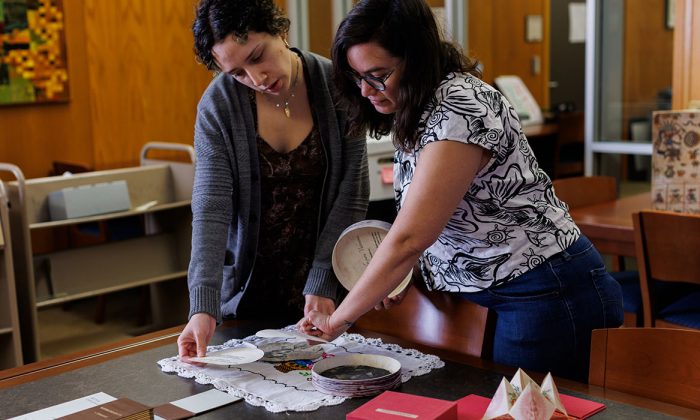The College of Liberal and Fine Arts has launched a new Bachelor of Arts degree in journalism within its Department of Communication, addressing a rising demand for skilled media professionals.
The new degree expands the department’s existing offerings, which currently include programs in communication and digital media influence.
The new bachelor’s in journalism emphasizes community journalism, multimedia news production and hands-on experiential learning while also focusing on journalistic integrity and ethical reporting.
Courses will include the Fundamentals of Journalism, Digital Audiences, Media Writing and Reporting and Careers in Community Journalism, topics that prepare students for effectively gathering, analyzing and producing news content across platforms.
“This program equips students to craft compelling reporting while working hand-in-hand with the communities they serve.” — Mary Dixson
The Department of Communication has assembled an experienced team of faculty members to lead the journalism program. They include Communications Lecturer Pedro Cabrera, Professor of Instruction Mary Dixson, Professor and Director of Digital Initiatives Seok Kang, Professor of Practice Ryan McPherson and Associate Professor of Practice Charles Wright.
“Journalists connect people, build trust and amplify voices that might otherwise go unheard,” Dixson said. “This program equips students to craft compelling reporting while working hand-in-hand with the communities they serve.”
Hotspots for journalism in Texas
The curriculum is strategically designed to reflect workforce demands and prepare students for diverse career paths, including positions as journalists, technical writers, news producers, communication specialists, marketing specialists and media managers.
The program aims to address regional market needs, demonstrated by significant job growth projections in areas such as public relations, technical writing and digital media production roles. Those jobs are expected to see up to 14% growth in the next decade, according to the Bureau of Labor Statistics.
The journalism advocacy nonprofit Poynter identified San Antonio and Texas’ other major cities as hotspots for journalism and communication-related careers. With over 5,000 newly created jobs projected within the next several years, the journalism degree is expected to directly contribute to a growing employment market.
In addition, the new degree program fills a notable gap in higher education in the state. Few institutions offer specialized journalism degrees, with Our Lady of the Lake University in San Antonio representing one of the few local providers.
UTSA’s program is positioned to attract new students and transfer students from community colleges looking to complete their education with a robust four-year journalism degree.
“Students who are part of their high school journalism programs now have the option to continue to develop their critical storytelling skills at UTSA,” Cabrera said.
New websites and digital documentaries
Along with traditional classroom experiences, the program is designed to prioritize career-engaged learning, incorporating direct community engagement projects and collaborations across campus programs.
The capstone course, Careers in Community Journalism, offers practical experience through internships and partnerships with local media organizations. Students from journalism, communication and digital media influence programs are expected to collaborate to produce news websites, digital documentaries and other community-focused initiatives.
The program has been designed to provide students with technical skills in multimedia production and reporting and also instill essential ethical standards critical to contemporary journalism. Course material will address how to navigate digital platforms effectively, engage diverse audiences and produce accurate, fair and impactful journalism.
“UTSA journalism students will be equipped with robust news literacy, contributing to fostering a transparent, authentic, and ethical news environment in an age of misinformation,” Kang said.
Department of Communication Chair Chad Mahood said the department plans to continually assess the journalism degree program to ensure that it remains aligned with industry standards and adapts to changes within the media landscape.
“Journalism changes quickly, with new tools and platforms arriving every year,” Mahood said. “We have built a program that keeps pace with those shifts, so our students leave with the skills to report with accuracy, tell compelling stories, and connect with the communities they serve. They will graduate ready to succeed in their first role and confident enough to help guide where the field goes next.”



